Could American Football Flourish in the Land of Soccer?
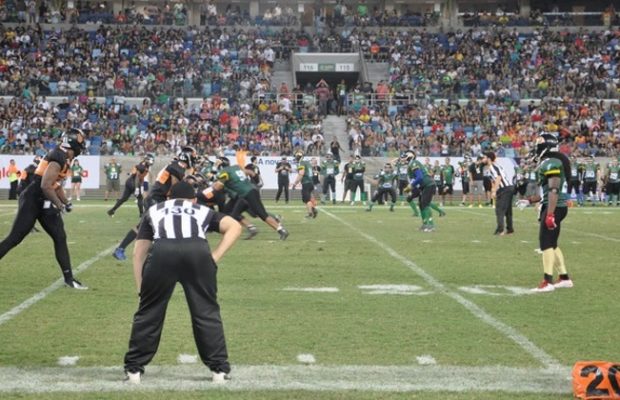
As a kid in the United States, I was an avid soccer fan. As such, at the time, the sport was ridiculed. It was a sport for little kids and wimps. A sport of phantom fouls and skimpy shorts. More than once I heard that it was a Communist sport, despite the fact that no Communist country ever won the World Cup and that several Communist countries, most notably Venezuela and Cuba, had baseball as their national sports.
Eventually, soccer grew. The 1994 World Cup, and the fact that the Americans made it to the second round, grabbed the attention of millions of kids like myself. In 1996, the Atlanta Olympics saw Nigeria beat Brazil in one of the most famous upsets. That same year Major League Soccer began. Despite early troubles, the league has grown to twenty teams and attracts some of the most famous players around the world.
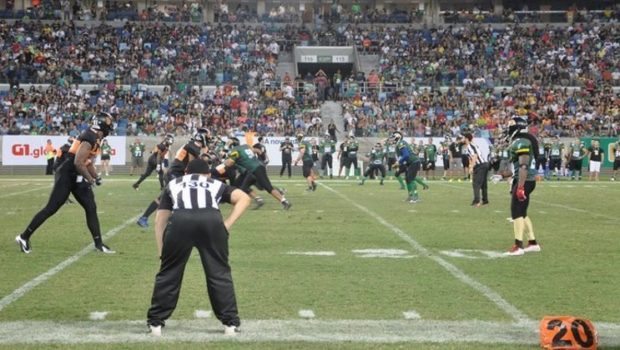
Over 15,000 football fans attended the game between Cuiaba Arsenal and Coritiba Crocodiles at Arena Pantanal in November 2015.
Now, living in Brazil, I wonder if any American sports could take off in similar fashion. Basketball is already popular with many Brazilian born players practicing their craft in the NBA.
However, there is another sport that is making surprising inroads in the South American nation; American Football.
To demonstrate how far the sport has come, I attended the semifinal of the country’s championship between Cuiaba Arsenal and Coritiba Crocodiles in November 2015. The game was played in Arena Pantanal, a stadium, which hosted 4 World Cup games in 2014. The game didn’t attract 5 or 10 thousand. Nope, it brought in over 15,000 fans, the largest crowd to ever witness an American football game in Brazil.
Attracting 15,000 people to an event in a city with average temperatures over 100 degrees and asking them to part with their money is quite a feat. This was also done in a metropolitan area of just 800,000 during an economic crisis.
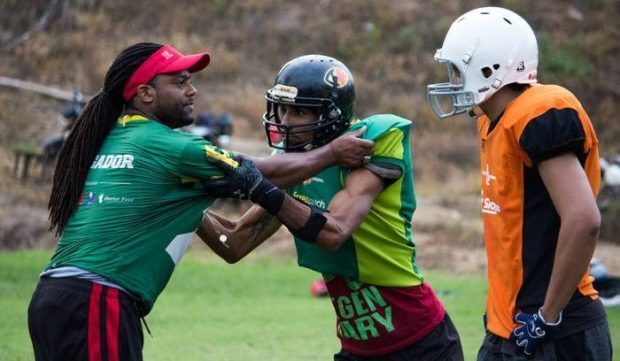
Many teams bring in Americans to train their players. Even so, the number of Americans who can play on each team is limited, in order to encourage growth of domestic talent.
Even more impressive is that the team, Cuiaba Arsenal, has no paid staff. The team, and the league as a whole uses social media and word of mouth marketing to bring people in. Of course approval from the state’s governor for the use of the stadium and beer sales helped.
On the positive side, the game attracted a young population that is more worldly and open to sports and culture from other countries. Furthermore, ESPN covers games on a weekly basis during the NFL and NCAA seasons. The Superbowl has been covered for many years now.
One should be cautious to get too excited though. It is important to remember that teams like Cuiaba Arsenal don’t pay their staff or players anything. Any profit is spent on road trips. Moreover, the sport is complicated and requires educating a population. Additionally, football is expensive with pads, helmets and footballs needing to be purchased. Soccer requires simply a ball and anything that can be used for goal posts. Finally, Brazil does not have the level of expatriates (Americans living in Brazil) that help prop up soccer in its early days. Being the land of immigration, soccer was imported by group after group over a period of a century.
Another note of caution is that many things are fads. Even though Cuiaba Arsenal is celebrating 10 years this year, the side has seen attendance fall, despite playing games at a Arena Pantanal free of charge. Their first game of the year in July brought in approximately 11,000, while their most recent home game a few weeks ago brought in only around 2,000.
Two main reasons for the drop in attendance is poor scheduling on the national level and a devastating economic crisis at a level not seen since the 1930s. The former includes scheduling games on Saturday in conflict with other major sporting events like UFC 200 and the Brazilian Men’s Soccer Team’s gold medal match on the second to last day of the Olympics.
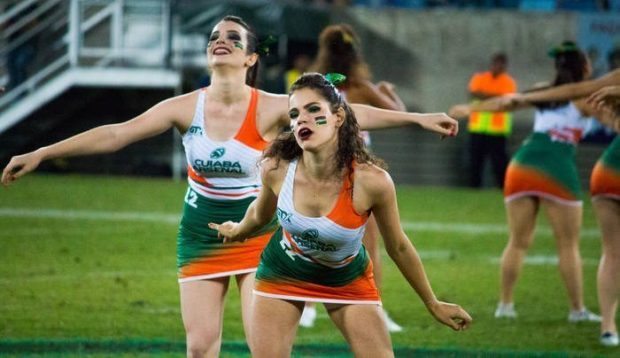
Brazilians have got into the spirit by adopting many traditions from the American sport
Despite the uphill battle, it will be interesting to see how the sport grows in the country. It will be particularly interesting to see if the sport can takeover markets like Cuiaba, which has a weak soccer presence. Another thing the team did, which brought it success was by adopting the whole package of the American sport. The team has cheerleaders, a female team, runs flag football tournaments and even co-promotes halftime shows with popular musical acts.
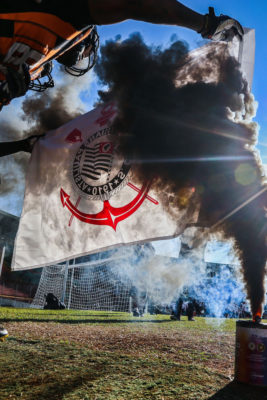
Soccer teams like Corinthians in Sao Paulo and Flamengo in Rio, who have millions of fans have sponsored American football teams that use their name, image and resources Photo: Paulo Pinto/ Fotos Públicas
In Brazil, American football is organized by the Brazilian Confederation of American Football. Teams vie for state championships early in the year and later compete against teams across the country for the national title. Currently, the confederation hosts 30 teams, which are divided into four regional divisions.
Note: This blog post was originally posted on my (Brazuca) blog, Brazil Business News, on June 28, 2016. This post has been updated with new information, such as attendance for games in 2016.
Original blog post by Brazuca.